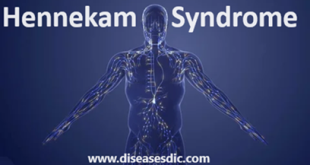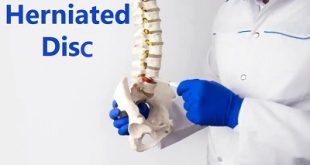Definition
Horseshoe kidney occurs in about one in 500 children. It occurs during fetal development as the kidneys move into their normal position in the flank area (area around the side, just above the waist). With horseshoe kidney, however, as the kidneys of the fetus rise from the pelvic area, they fuse together at the lower end or base. By fusing, they form a “U” shape, which gives it the name “horseshoe.” One-third of individuals with horseshoe kidney will have at least one other anomaly or complication involving the cardiovascular system, the central nervous system, or the genitourinary system.
Epidemiology
The incidence of horseshoe kidney is approximately 1 in 500 in the normal population with a male preponderance of 2:1. The incidence is higher in those who present to urology clinics (1 in 304), and with some chromosomal disorders. These include Edward syndrome at approximately 67%, Turner syndrome at 14% to 20%, and Down syndrome at about 1%.
Types of Horseshoe kidney
The horseshoe kidney is one form of a renal fusion abnormality. The other two main types are crossed fusion renal ectopia and a fused pelvic kidney.
- In a crossed renal ectopia both kidneys are positioned on the same side of the body with one ureter crossing the midline to drain into the bladder.
- In fused pelvic kidney there is one renal mass which is drained by two ureters that do not cross the midline
Horseshoe kidney causes
No one knows for sure. Experts think it may happen when there’s a problem with a child’s genes.
The condition can happen when a child has certain genetic disorders, especially:
- Turner syndrome, a condition in girls that causes shorter-than-normal height and ovary problems.
- Edwards syndrome, also called Trisomy 18. It causes slow growth in the womb, low birth weight, and several serious medical problems.
Symptoms of Horseshoe kidney
Horseshoe kidney can occur alone or in combination with other disorders. About one-third of children will have no symptoms. A horseshoe kidney typically does not affect life expectancy. One-third of individuals with horseshoe kidney will have another anomaly or other complication involving the cardiovascular, nervous, or genitourinary system.
Kidney stones: A kidney stone is a hard mass that develops when chemicals in the urine crystallize or form into a mass within the kidney. Increasing water intake can help reduce the chances of developing stones.
Hydronephrosis: Swelling of a kidney due to urine backup due to a blockage of the ureter. This is diagnosed using an ultrasound.
Wilms tumor: An embryonic tumor of the kidneys that usually occurs during early childhood.
Vesicoureteraul Reflux: Also known as VUR, this is typically noticed after a urinary tract infection that also comes with a fever.
Renal cancer: Cancer that forms in the lining of very small tubes in the kidney that filter the blood and remove waste products or forms in the center of the kidney where urine collects.
Various cardiovascular, gastrointestinal findings (e.g., anorectal malformations, malrotated bowel)
Skeletal problems (e.g., cleft lip/palate, clubfoot, polydactyly)
The symptoms of horseshoe kidney may resemble other conditions or medical problems. Always consult your child’s doctor for a diagnosis.
Horseshoe kidney complications
About 1 out of 3 children with horseshoe kidney will have a problem with the heart and blood vessels, nervous system, or genitourinary system. These problems may include:
Hydronephrosis: This is swelling of the kidneys caused by a buildup of urine. It can happen because of a urinary tract blockage.
Wilms tumor: This is a tumor of the kidneys that can occur in early childhood.
Kidney cancer: This is when cells grow uncontrolled into lumps in the kidney.
Polycystic kidney disease: This disease causes many fluid-filled pouches (cysts) to form inside the kidneys.
Hydrocephaly: This is extra fluid on the brain.
Spina bifida: This is a type of neural tube defect, where part of the spinal cord forms abnormally.
Horseshoe kidney can also occur along with other problems with the heart and blood vessels, digestive system, or bones.
Diagnosis and test
In a child without symptoms, diagnosis, or treatment may not be necessary. If your child is having any of the mentioned complications, your child’s physician may order one or more of the following diagnostic tests:
Renal ultrasound- A diagnostic imaging technique that uses high-frequency sound waves and a computer to create images of blood vessels, tissues, and organs. Ultrasounds are used to view internal organs as they function, and to assess blood flow through various vessels.
Voiding cystourethrogram (VCUG)- A specific x-ray that examines the urinary tract. A catheter (hollow tube) is placed in the urethra (tube that drains urine from the bladder to the outside of the body) and the bladder is filled with a liquid dye. X-ray images will be taken as the bladder fills and empties. The images will show if there is any reverse flow of urine into the ureters and kidneys.
Blood tests to determine how well the kidneys are be functioning
Urine tests including a culture
Treatment
How we treat horseshoe kidney depends on whether your child has symptoms. If he does not have symptoms, your child usually does not need treatment. However, it is a good idea to have regular check-ups with your child’s doctor to monitor the kidney.
If your child has symptoms or conditions caused by horseshoe kidney, doctors will talk with you about the best treatment. There is no cure for horseshoe kidney, but the symptoms can be treated.
Your child’s doctor might refer you to a nephrologist (kidney doctor) or urologist (a doctor who treats problems with the urinary tract, or where you go to the bathroom). He might also refer you to other specialists (doctors who treat specific problems) who care for problems related to your child’s symptoms.
Methods to keep your horseshoe kidney healthy
Guard your kidneys against physical trauma: Horseshoe kidneys are not protected by your ribcage and muscles because they do not ascend like normal kidneys. Because of this, it is really important to protect your kidneys as much as possible. It is best to avoid contact sports and occupations where your horseshoe kidney could be put at risk.
Stay hydrated all the time: Drinking lots of water every day will help to clean your kidneys out regularly. You should try to drink at least 8 to 10 glasses of water a day, but if you have the chance to drink more than that, more is even better! Carry a water bottle around with you so that you can stay hydrated even on the go.
Eat natural unsaturated fats, rather than saturated fats: Unsaturated fats lower the amount of bad cholesterol in your body and can help to cushion your kidneys. Saturated fats, on the hand, contain cholesterol and can harm your body if you eat them a lot. Stick to unsaturated fats for the most part.
 Diseases Treatments Dictionary This is complete solution to read all diseases treatments Which covers Prevention, Causes, Symptoms, Medical Terms, Drugs, Prescription, Natural Remedies with cures and Treatments. Most of the common diseases were listed in names, split with categories.
Diseases Treatments Dictionary This is complete solution to read all diseases treatments Which covers Prevention, Causes, Symptoms, Medical Terms, Drugs, Prescription, Natural Remedies with cures and Treatments. Most of the common diseases were listed in names, split with categories.








To prevent injury, people should do warm-ups before playing sports, which would include a light jog and stretching. The hamstrings and the quadriceps as well as other muscles should be stretched. That way, the first time you fire a muscle in a burst, such as in a run, it won’t tear. Exercise is great, but a few words of caution might be warranted for those who spent the snowy winter and wet spring in hibernation.
Data are so useful here about diagnoses of kidney